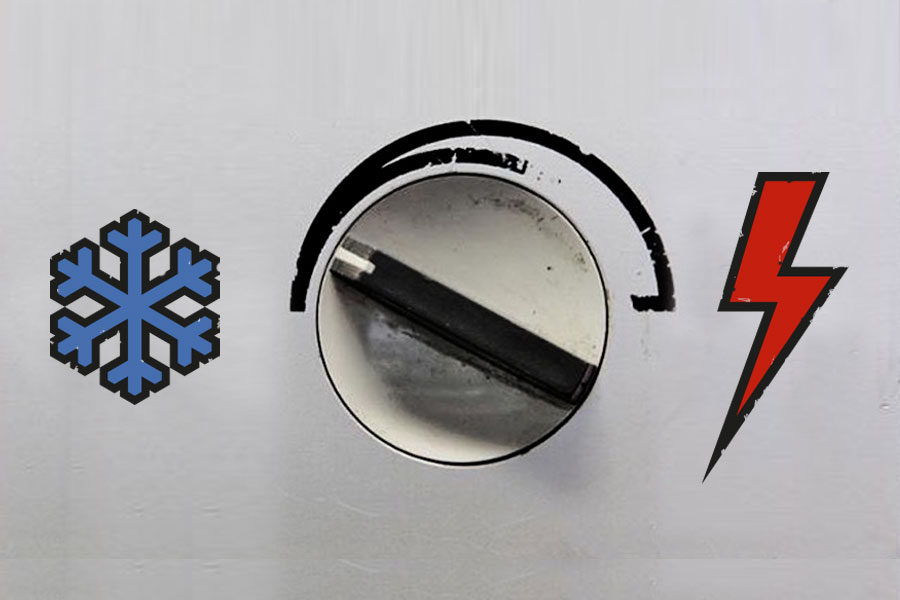“Tell me, what do you recommend for catfights?” one of my seminar participants, a managing director in the printing industry, recently asked me. “What do you mean exactly?” I asked him. Mr. A. explained – “Well, I have two female employees who simply don’t get on.
It already starts with the air-conditioning. At the height of summer, one of them sits in the office in a tank top while the other wears a cardigan. Every two hours one of them comes to see me to complain that the other has once again set the air-conditioning too high or too low. I have even had the thermostat moved to my office. But that did not stop the catfights.”
Let’s get one thing straight immediately – this is not a catfight, or rather, I don’t even know what that’s supposed to be. I was faced with the very same “problem” almost 30 years ago with two male protagonists. 1990. I am standing on top of a ladder in the library of a financial institution. My vacation job involves me updating legal loose-leaf collections. The head of Marketing, Mr. M., is sitting in the library reading periodicals. He is wearing a tweed jacket and a woolly hat. At this moment my boss, the head of Communication, Mr. K., walks into the room. He is not wearing a jacket and is starting to walk toward the air-conditioning system’s thermostat. The following dialog takes place:
Mr. M.: “Oh, it’s YOU who keeps turning the library into a fridge! When I arrived an hour ago I had to get my jacket and my hat, otherwise the cold would have been unbearable. Mr. K., I insist that you do not change the temperature!”
Mr. K.: “Mr. M., I don’t know what’s wrong with you that you sit here wearing a woolly jacket when it’s 22° Celsius. I can hardly wear a Hawaii shirt to work just so that I don’t suffer a heat stroke when I’m in the library. You really have to be more accommodating when it comes to the temperature.”
Mr. M.: “Don’t be ridiculous. Hawaii shirt! I also doubt very much that it is 22° in here. When I entered the room the thermostat said 18°. I only turned the temperature up so that the library would heat up more quickly. But let’s be sensible about this – what do you suggest?”
Mr. K.: “How nice that YOU out of all people are suggesting a compromise. Let’s agree to meet in the middle!”
Mr. M.: “OK, where is the middle for you exactly?”
Mr. K. points at the thermostat – “For me, the middle is vertical!”
I really have to try hard to stop myself from bursting out laughing. I am shaking uncontrollably and have to hold on tight to make sure that I don’t fall off the ladder. But it’s no use, a second later I’m involved.
“What is your opinion on this, Ms. Keromosemito?” Mr. K. wants to know. He is evidently looking for an ally. As he is my boss he is convinced that I will support him. Interestingly, at this precise moment I feel both hot and cold. I am certainly not a competent advisor when it comes to the topic of temperature. Of course I don’t want to stab my boss in the back. But I also don’t want to publicly criticize Mr. M., who is considered to be a powerful man in the company. I answer in what I hope is a diplomatic manner – “Well, I must say I do feel quite warm, which is mainly due to the fact that I keep climbing up and down this ladder. If you sit still for longer periods of time then you can definitely feel the cold.” I do not remember how this discussion between the two men ended. I have heard though that regardless of the room temperature, both men continued to bicker until their retirement.
10 years after “for me, the middle is vertical,” during my training to become a coach, I learned from Ulrich Dehner that I had unwittingly taken part in a “Courtroom Game” back then. This is a psychological game, which is a concept from transactional analysis. Two persons who are in conflict with one another look for a third person to come up with a verdict. This no longer concerns the actual issue but above all serves to prove that the other person is wrong. A psychological game starts with bait that should not be taken. However, if the bait strikes a nerve for the player, this is difficult. It then turns into an automatic, predictable game that ends with two losers. It leaves a bitter aftertaste. How can this be prevented? In the library back then I should have left the responsibility for solving the problem with those people who had the problem in the first place. The same goes for Mr. A. But what can you do if you find this difficult? Maybe because as a manager you want to ensure justice? From a pragmatic point of view, just leave it be. As a manager it is not your job to ensure justice even if you think it is. It doesn’t work. In court you would only get a verdict anyway. Whether this then leads you to feel that justice was served remains to be seen. So just leave it.
But what if you are actively involved in the conflict? Does that even work, NOT reacting at all? Yes it does, it is just considerably more difficult. With the experience I have today as a coach, I would like to ask Mr. K. – “What does it mean to you if you see Mr. M. sitting in the library wearing a woolly coat and a hat? What upsets you about this? He would probably reply – “He is making fun of me and wants to provoke me.” A provocation is a threat. This in turn triggers a counter-reaction in the form of a fight (Hawaii shirt) or flight. If we feel inferior, we often ask others for help in the hope that they will agree with us. We see the other person as the opponent or the enemy and we don’t want to lose, no matter what!
I love the human mind! It can be so very creative and absurd. How can someone be an excellent manager and then consider someone wearing a jacket to be a provocation that must be dealt with? The same applies to Mr. M by the way. What would be so bad about Mr. K. wearing a Hawaii shirt to work? It would certainly add a bit of color to the grayness of everyday working life. How is it possible that Mr. K. considers Mr. M. to be an enemy rather than a colleague who is probably also interested in cooperating constructively? And vice versa? How can both fail to see that fighting with a colleague will always lead to at least one loser? Possibly even several?
Our emotions are to blame for this. Especially when we feel threatened and are not careful, we find ourselves at their mercy. Please note: if you only fight to be proven right, you are already emotional. You have the mental state of a five year old and your only options are fight or flight. In this state you will behave in a very similar way to my sons, who used to fight about their jetpack and their Lego when they were at kindergarten age. This always ended with both of them standing in front of me crying and accusing each other – “HE started it.” It is impossible for five year olds to behave in a rational way to jointly arrive at a sustainable solution no matter how intelligent they are.
How can you get out of this state and once again become able to act? It may help to turn inward and ask yourself what the physical signs of this provocation are. How do you feel? Do you feel a sense of anger deep down? Do you find it difficult to breathe? Do you feel a tingling sensation in your fingers and would love to strangle your colleague? If yes, turn your attention to that area of your body and remain there while you breathe in and out 5 to 10 times. What happens to the feeling in your body? Is it getting more intense? Is it getting better? Does it stay the same? You will often find that the unpleasant feeling in your body will go away. In this way you manage to create some distance between yourself and your emotions. In the end, the provocation is just a weird pulling sensation or a tightness in your body. You can react to it but you don’t have to. If you manage to slow your body down a little you will notice that you no longer feel that the emotion has a hold on you. You see things clearly again. If you see things clearly then YOU decide what to do, not the 5 year old in you. I am certain that Mr. A. would not have decided to move the thermostat to his office if he had been in a clear state of mind.
And in a clear state of mind both Mr. A. and Mr. K. would have noticed that there is no longer a problem. Whoever was feeling cold had already put on something warmer. Problem solved. That is all. No need to take any action. No catfight. No fight of any kind in fact. The madness in the office usually takes place between the ears.

